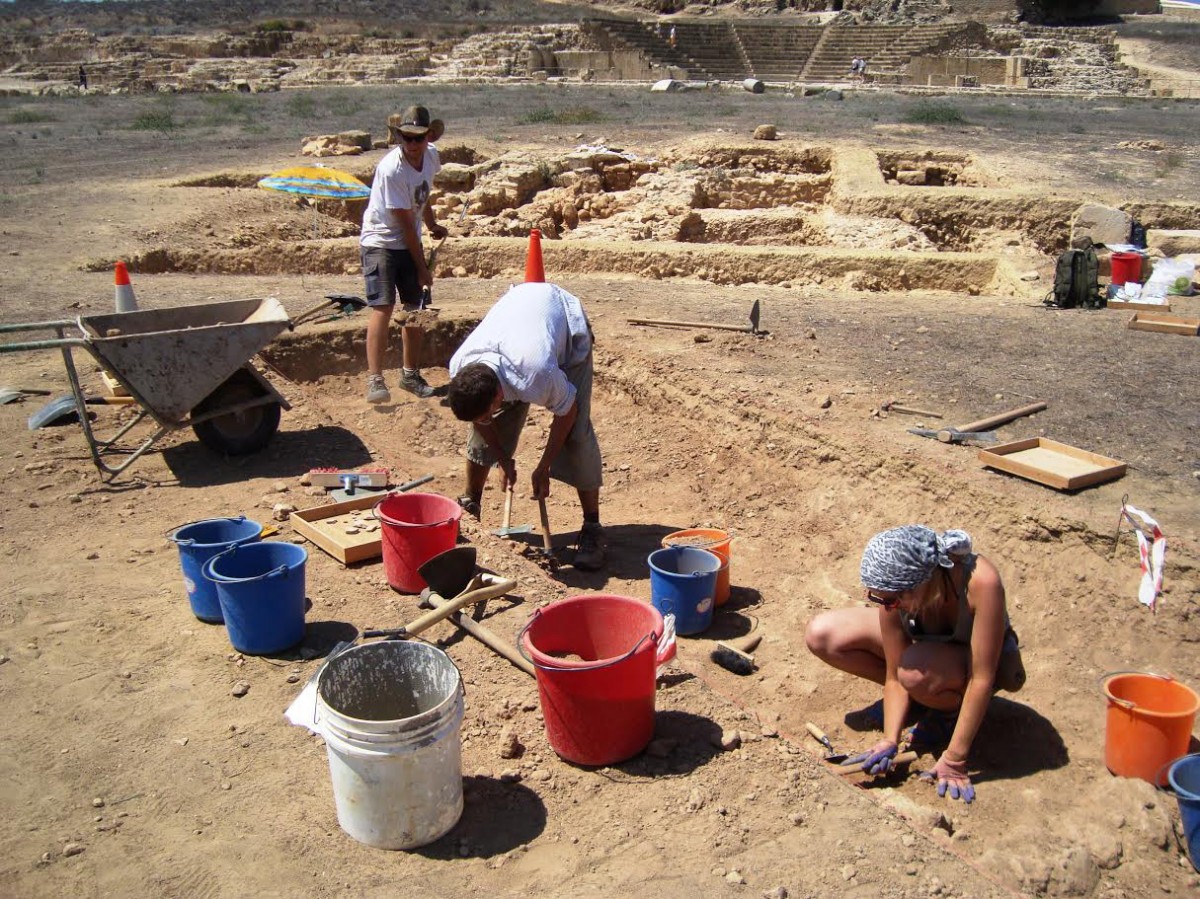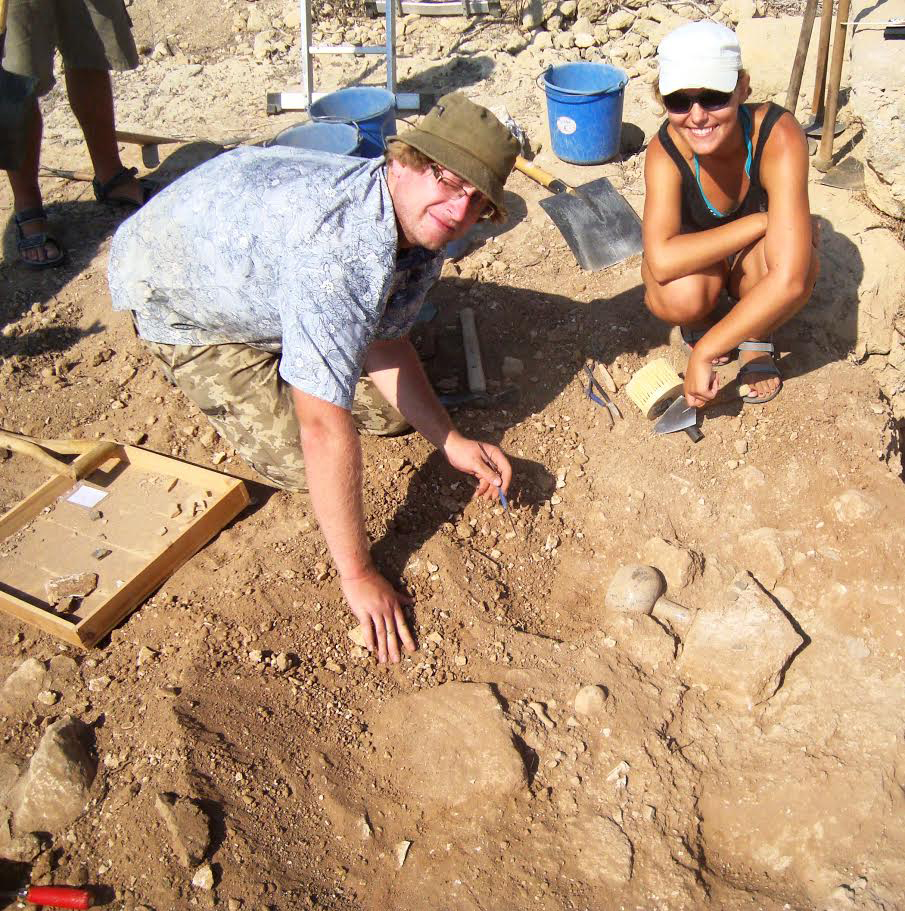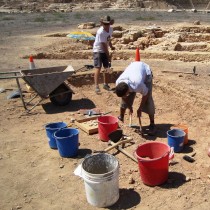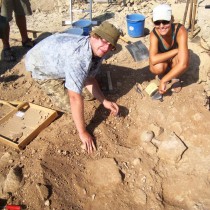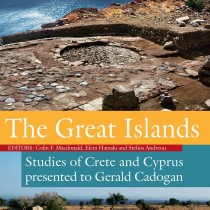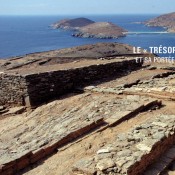During 2016, two kinds of activities were undertaken in the framework of the Pafos Agora Project. In the spring a study season took place, followed by a long research campaign in late summer-early autumn. The study campaign was devoted to the study of the architecture and all movable material uncovered during previous seasons. Also the site’s stratigraphy and pottery were analysed, aiming to clarify the development phases of the site. Also, conservation work took place at the site including the conservation of floors, basins, plasters and walls.
The research campaign was interdisciplinary: as in previous seasons, it included regular excavations in the main city square, geophysical research in the area north-west of the Agora and the Agora itself, geo-archaeological research, as well as on-site conservation work and treatment of objects stored in the Archaeological Museum of the Pafos District. This year five areas within the Agora itself were investigated. In particular, a well was excavated with a diameter of ca. 0,90m and a depth of 4.88 meters, partly carved in one of the ashlars of a wall. The well’s fill mainly consisted of pottery fragments dated to the late Hellenistic period. The most surprising finding in the well was a human skeleton, found at a depth of ca. 3.5 m. The skeletal remains will be analysed in next study campaign.
In Trench VI the remains of a wall of the “compartment type” construction were discovered. It is undoubtedly the continuation of wall S.17, so at the current stage of research, this wall in the captured line has reached a length of 38.18 meters. Trench V was opened in order to verify the results of the geomagnetic prospection carried out at the Agora during the previous season. Data from this research suggested the existence of two corners corresponding to the layout of the walls uncovered within Building A in Trench I, and in addition, the existence of another building located in the north-eastern part of the Agora. The results of work in Trench V have only partly confirmed the data from the magnetic prospection: the corners have been found, but both their location and course differ somewhat from the geophysical image. The uncovered remains of a building with many rooms seems to date to the Hellenistic period.
The widest range of works were conducted in Trench II, where the investigations continued within Room 15 (partly investigated in 2013) and south of (in an area ca. 25m long and approx. 5.5 m wide) along the crepidoma of the east portico of the Agora. Here, a number of new rooms were revealed. The most important discoveries came from Rooms 15 and 16. In Room 15 two intact glass vessels, which had avoided destruction (probably caused by an earthquake) were discovered. These objects had been deposited in a kind of box with possibly an iron handle. Two intact oil lamps were found in this context, as well as pottery sherds. In the immediate vicinity, two bronze coin hoards were discovered, probably originally kept in a purse. The coins, which probably form one hoard divided into two parts, have been cleaned and examined preliminarily. They date to the first half of the reign of Emperor Hadrian. On the floor of Room 16 a small intact glass unguentarium and a toolkit of seven surgical instruments (six bronze and one iron) were discovered along with the remains of a bronze box. Preliminary research shows that these objects have analogies inter alia with the famous House of the Surgeon in Pompeii and also with the ‘ophthalmologist’s office’ in Lyon. The glass vessels could also be related to this medical activity, suggesting the remains of a surgical office that could have functioned in Rooms 15 and 16. The good state of preservation of all of these impressive finds suggests that the collapsed Rooms were probably never rebuilt. Preliminary analysis of the diagnostic material from the finds’ contexts dates the material to the years of the reign of Emperor Hadrian, which could coincide with the earthquake mentioned in ancient written sources and dated by modern scholars to 126 AD.
In Trench IV, the remains of a possible furnace, foundry crucibles and production waste were found in a deep pit. These finds suggest that, during the period preceding the erection of the east portico, there functioned a workshop related to the casting of bronze. The economic character of this area is also confirmed by the presence of a large number of amphorae and utility ceramics. Generally, research suggests that the Agora was a place of intensive construction activity, dating to the time of the founding of the city and later. In Trench II’s portico, during the last phase of its use (2nd c. AD), not only is trade indicated by small shops (tabernae) but also, medical activity seems to have taken place.
In 2016 geophysical research with magnetic methods was conducted by specialists from Hamburg University. Prospection occurred in the area north-west of the Agora and close to the north-western city gate. The main aim was to search for potential remains connected with the harbour that presumably existed here in antiquity, as well as other structures related to economic activity. Preliminary results include a rectangular structure that seems to have been a large building. Also, part of the Agora area was prospected with the aim of comparing the results with the results obtained from the year before. The collected data is now being processed and the results will be known before the next campaign. Geo-archaeological research was also conducted (in the area around Pafos, as well as in the Archaeological Park) by specialists from the Institute of Geography, Jan Kochanowski University in Kielce. The data received will be used for the reconstruction of the sedimentary environment of the surrounding area of Pafos and the phases of alluviation, which have determined the changes in the shoreline. One of the main aims is to verify the hypothesis that there existed a second port in this area.
The 2016 excavations were conducted by the Department of Classical Archaeology of the Institute of Archaeology, Jagiellonian University, Kraków, Poland, within the framework of the Pafos Agora Project. The Project aims to explore and study the Agora of the ancient city of Nea Pafos, the capital of Cyprus in the Hellenistic and Roman periods. The excavations are conducted under the direction of Professor Ewdoksia Papuci-Władyka. This year was the second season supported by a MAESTRO grant (from the National Science Centre, no 2014/14/A/HS3/00283).
